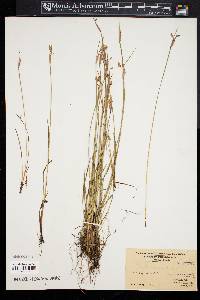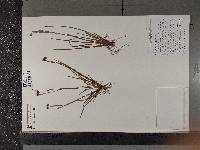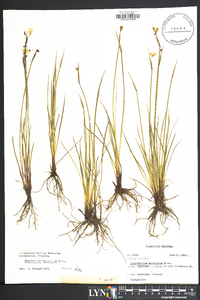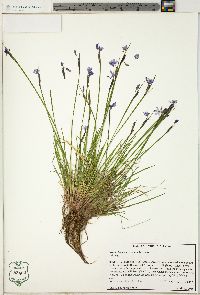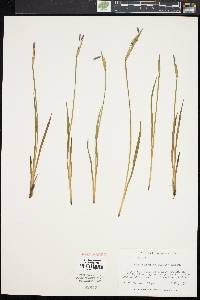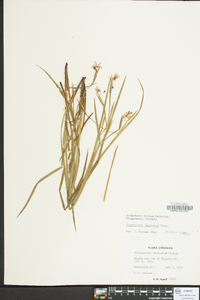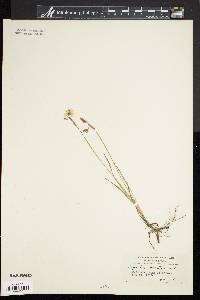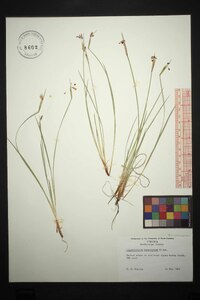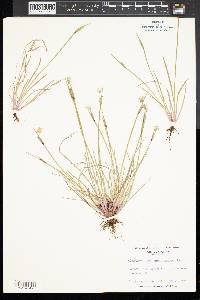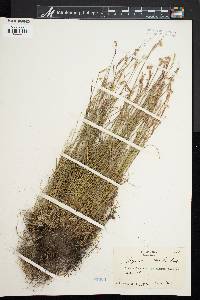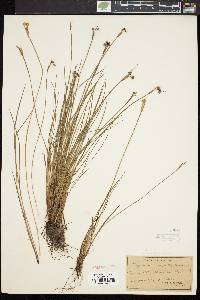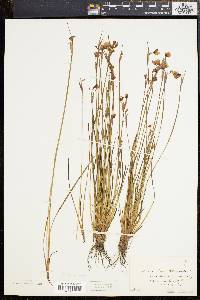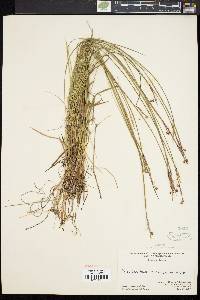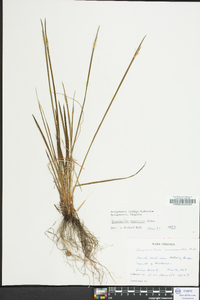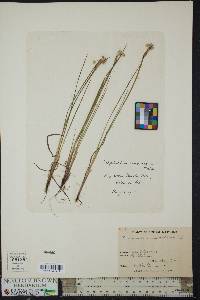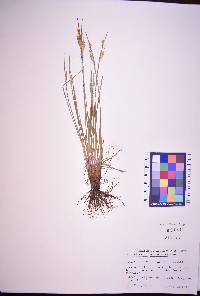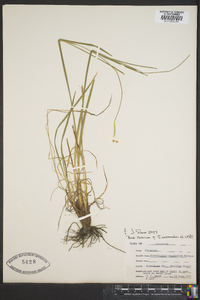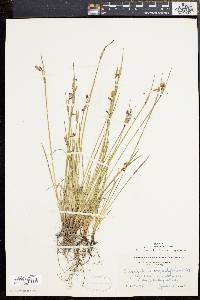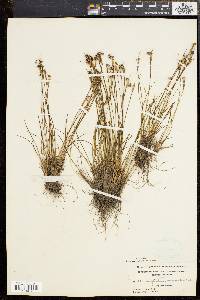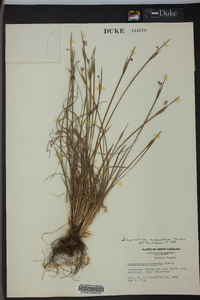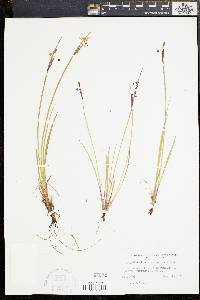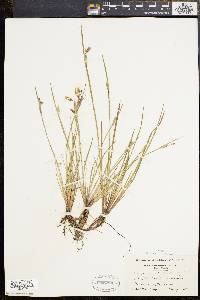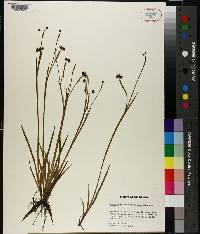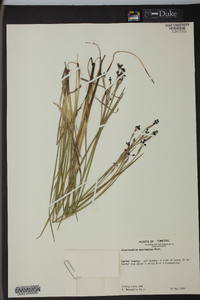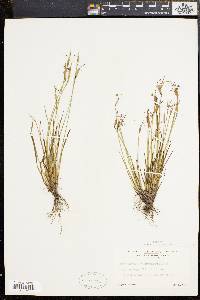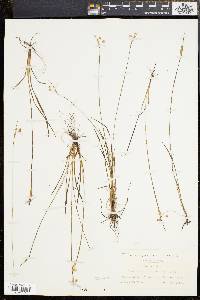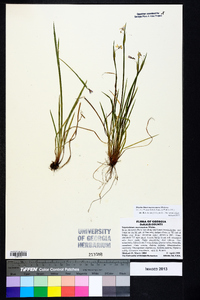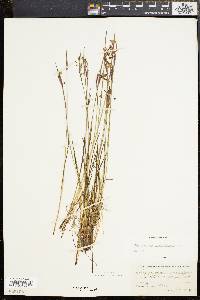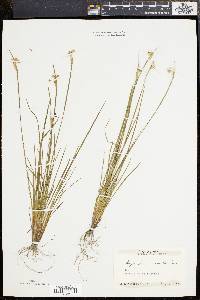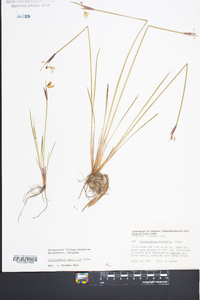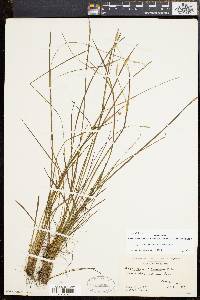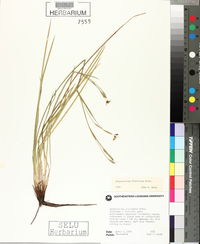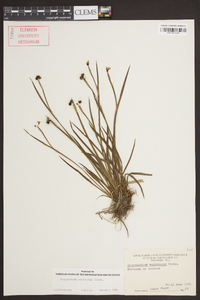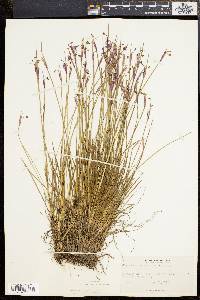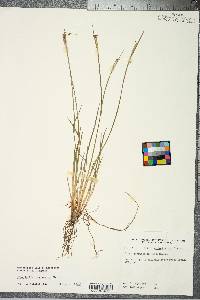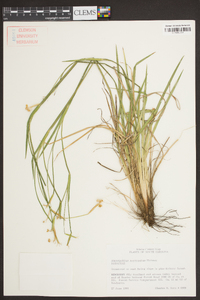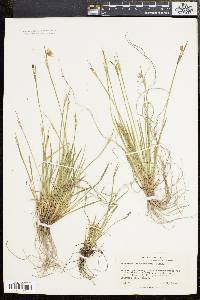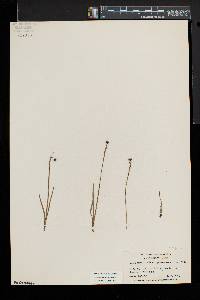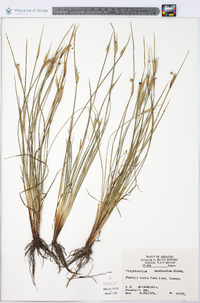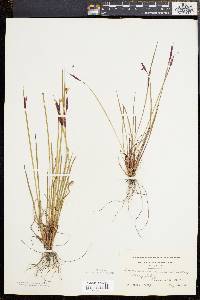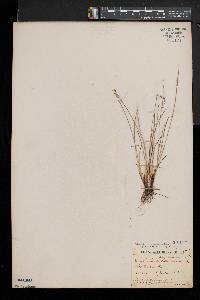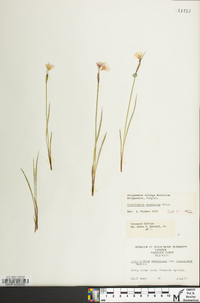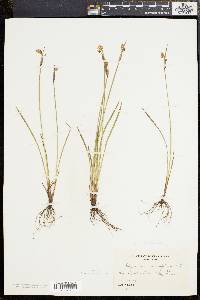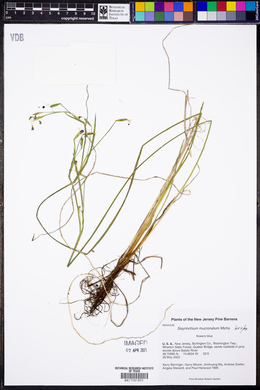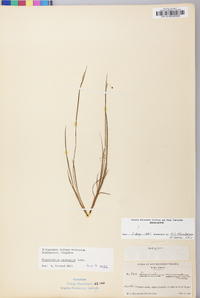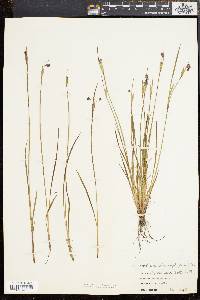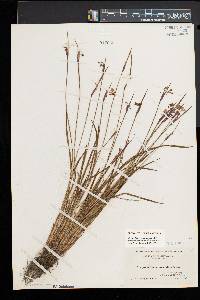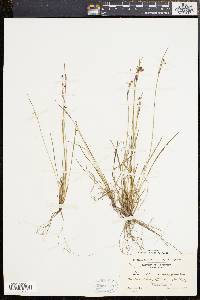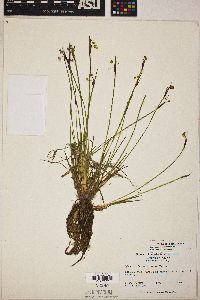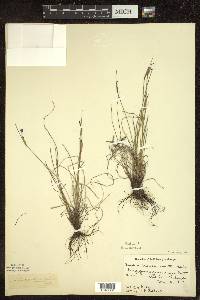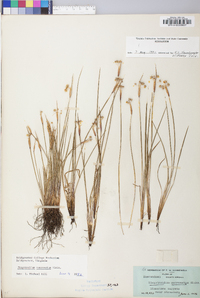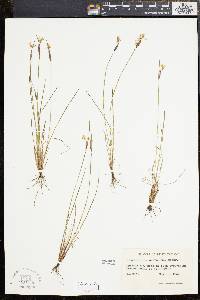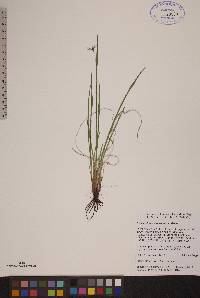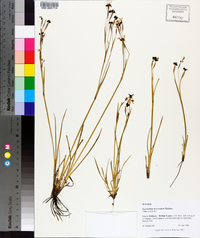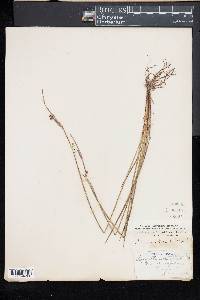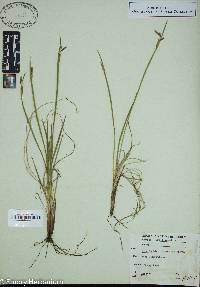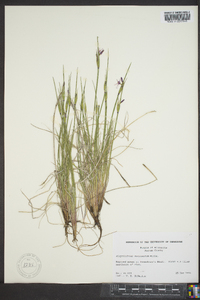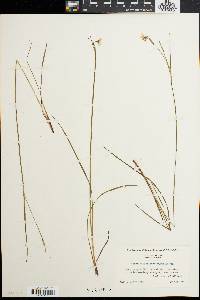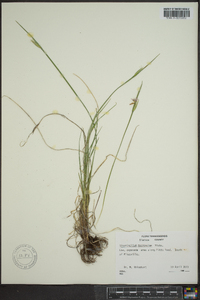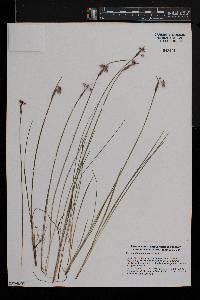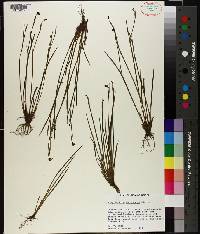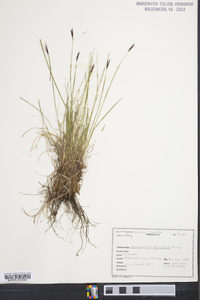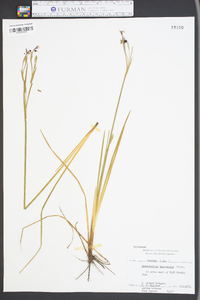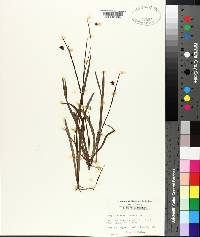
|
|
|
|
Family: Iridaceae
Needle-Tip Blue-Eyed-Grass
[Sisyrinchium versicolor E.P.Bicknell] |
Herbs, perennial, cespitose, dull green to olive when dry, to 4.2 dm, not glaucous; rhizomes scarcely discernable. Stems simple, often purplish, almost wiry, with very narrow or scarcely discernable wings, 0.9-2 mm wide, usually glabrous, margins usually entire to denticulate apically, similar in color and texture to stem body. Leaf blades usually glabrous, bases not persistent in fibrous tufts. Inflorescences borne singly; spathes mostly purplish, glabrous to slightly scabrous (in southern populations), keels entire; outer 34-52 mm, 14-31 mm longer than inner, usually tapering evenly towards apex, margins basally connate (0.7-)1-2.7 mm; inner with keel evenly curved to occasionally gibbous basally, hyaline margins 0.1-0.3 mm wide, apex acuminate to acute, ending 0.5-3.2 mm proximal to green apex. Flowers: tepals dark blue or bluish violet, occasionally white, bases yellow; outer tepals 9-12.5 mm, apex emarginate to rounded, aristate; filaments connate ± entirely, stipitate-glandular basally; ovary similar in color to foliage. Capsules tan to light brown with purplish tinge apically, ± globose, 3.2-5.5 mm; pedicel spreading to erect. Seeds globose to obconic, lacking obvious depression, 0.8-1.5 mm, usually granular. 2n = 32. Flowering spring--early summer. Prairies, roadsides, moist open woods, rocky and sandy open shores; 0--700 m; Man., Ont., Que., Sask.; Conn., Del., D.C., Ga., Maine, Md., Mass., Mich., Minn., N.H., N.J., N.Y., N.C., N.Dak., Ohio, Pa., R.I., S.C., S.Dak., Vt., Va., W.Va., Wis. Sisyrinchium mucronatum can be a difficult species to identify, especially in the north. Herbarium specimens seem to indicate that morphologically it may approach S. septentrionale in central Canada, and narrow specimens of S. montanum in the northeast. Fresh material, however, reveals that S. septentrionale tends to have much paler flowers with no emarginate apices and much longer outer spathes, and that S. montanum usually has much wider stems, leaves, and bracts, and the outer tepals have emarginate to retuse apices. Southeastern populations of S. mucronatum tend to be more scabrous while northwestern populations have less purple in the spathes.
Erect, 1-4 dm, delicate and wiry, dark green, drying dark; stems very slender, up to 1(-1.5) mm wide, barely or scarcely winged, entire-margined; lvs entire, very narrow, the larger ones up to 1.5 mm wide; spathes mostly solitary at the summit of the simple stem, often geniculate (set at an angle to the stem), anthocyanic or rarely green, the outer bract somewhat foliaceous and with its margins connate near the base, the inner bract shorter, 1.2-2 cm; tep 8-10 mm, bright violet (white); fr 2-4 mm; 2n=32. Meadows, fields, sandy places, and woods; Me. and w. Mass. to Ont. and Man., s. to N.C., Mich., and N.D. Gleason, Henry A. & Cronquist, Arthur J. 1991. Manual of vascular plants of northeastern United States and adjacent Canada. lxxv + 910 pp. ©The New York Botanical Garden. All rights reserved. Used by permission. |
This project was made possible in part by the Institute of Museum and Library Services [MG-70-19-0057-19].
Powered by Symbiota


